Pakistan. Part III. Peshawar, Lahore, KarachiMap
November Located in the north part of the country, the Federally Administered Tribal Area is a territory which is exempt from the rule of the authorities and laws governing the rest of Pakistan. Pakistanis themselves would never think of going there (it’s sort of like Chechnya, Dagestan or Ingushetia during times of war and turbulence). Talibs from Afghanistan travel freely into the FATA, which is another source of concern for the Pakistani authorities. 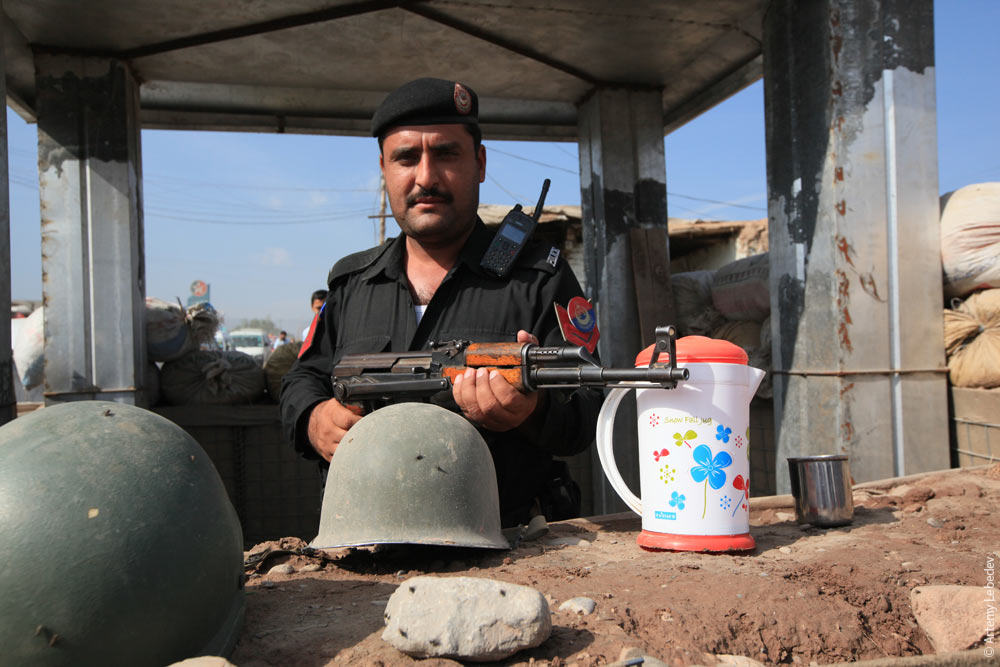 Located near the border is a camp for refugees from the FATA, who decided they didn’t want to live under the laws of the Taliban (no music, dancing, fun or Coca-Cola—just prayer, working in the fields and cutting off of hands). 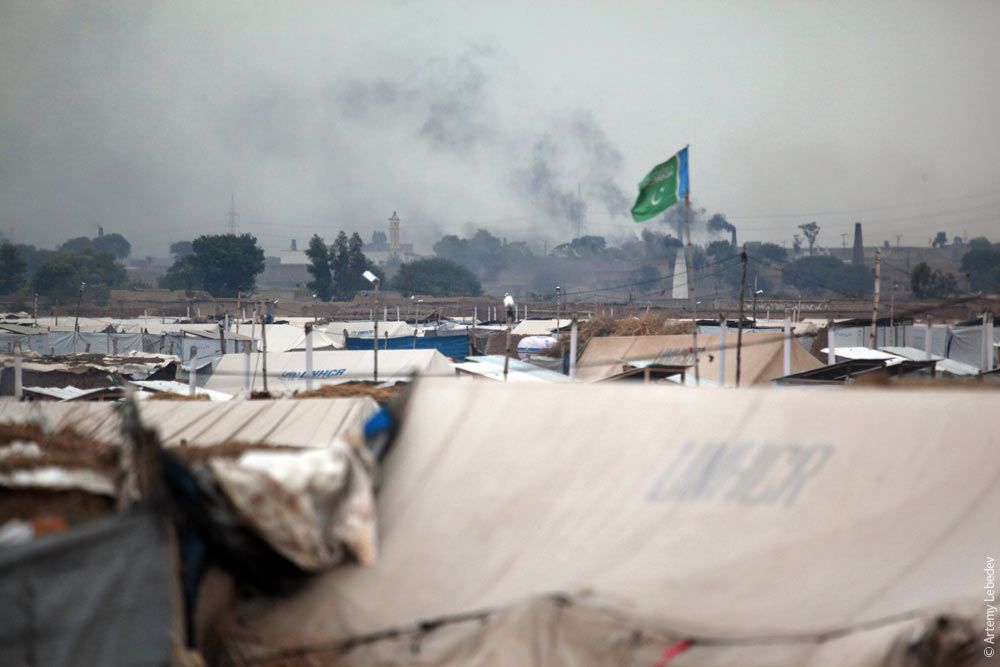 The refugees’ living conditions are pretty lackluster. The tents are made out of canvas, the fences—out of bricks. 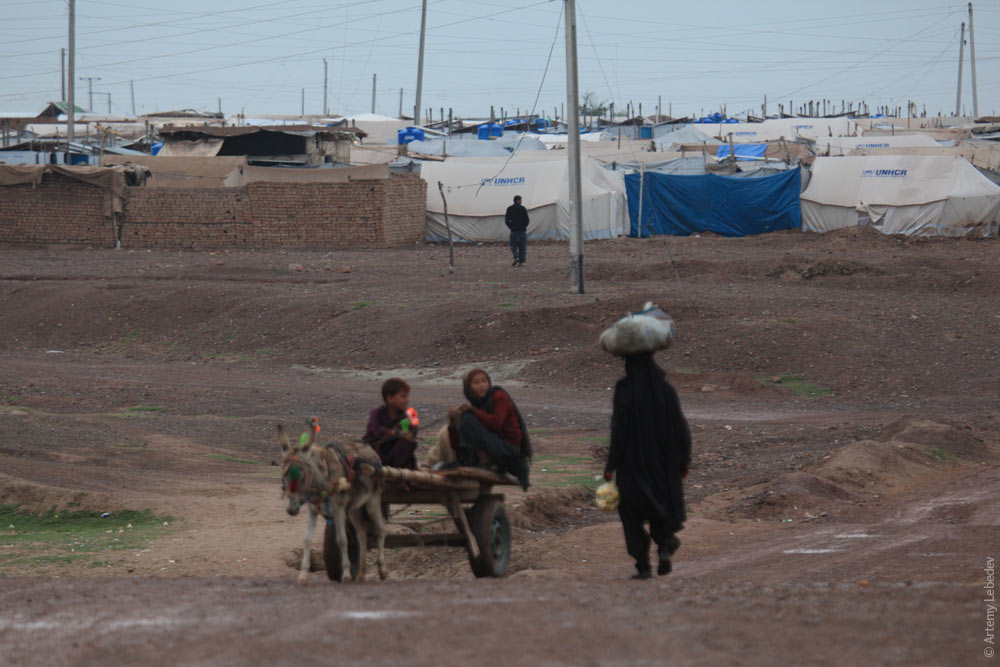 A few rare houses have clay walls. Meat hangs under the ceiling. 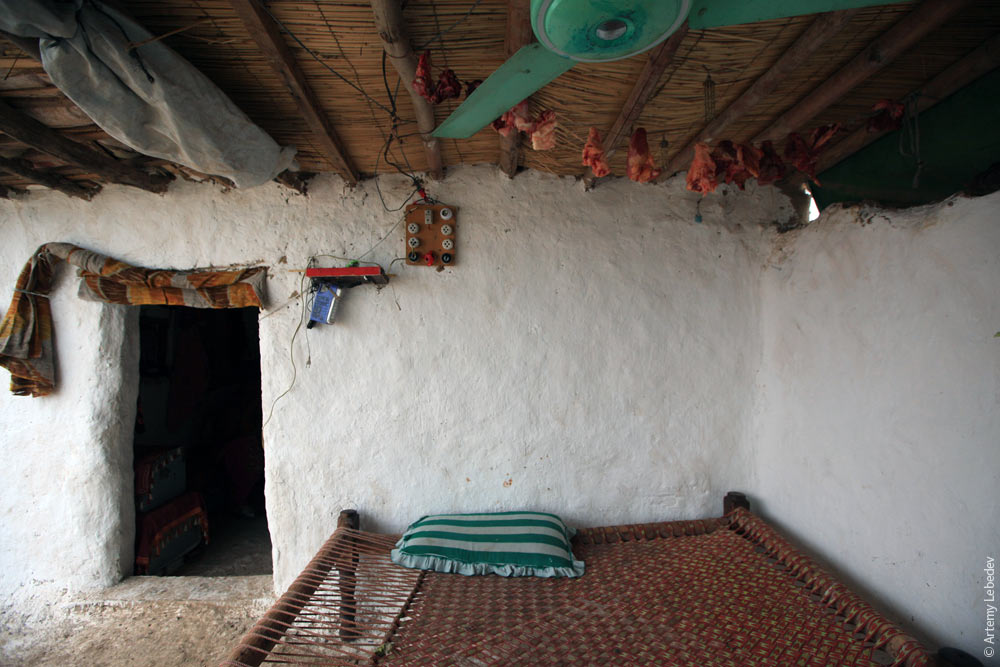 Kitchens are primitive. 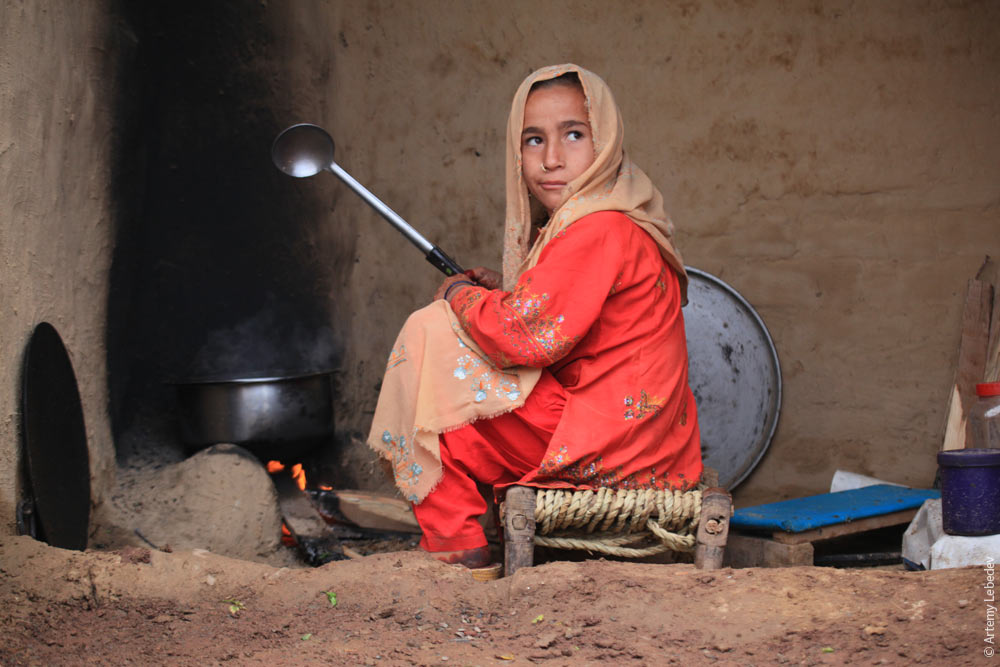 Dig a hole in the wall—and you have yourself a shelf. 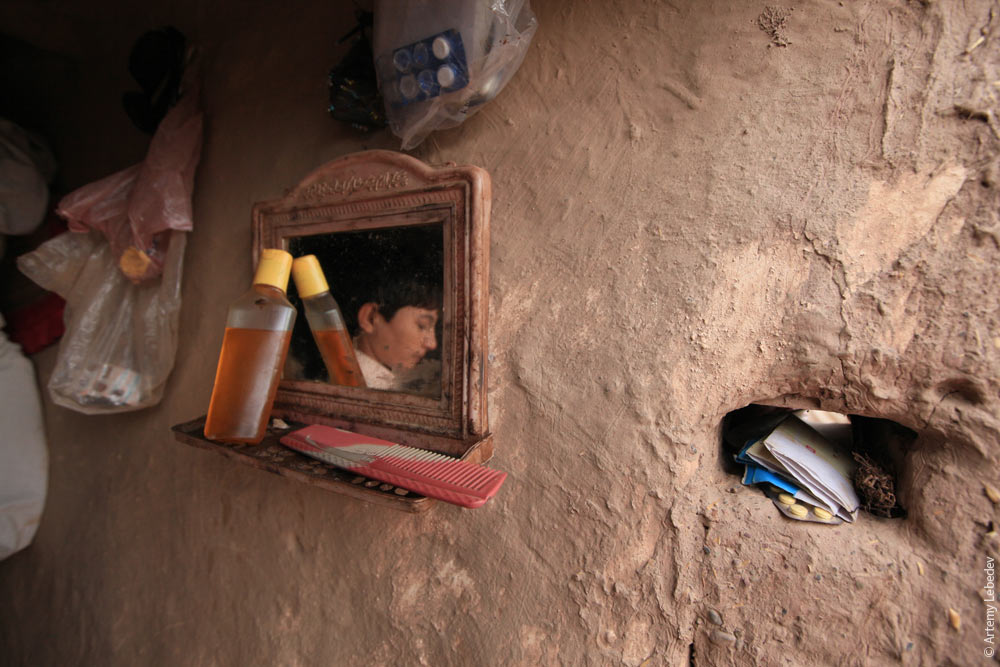 Everybody’s content. The child is in his cradle.  Children. 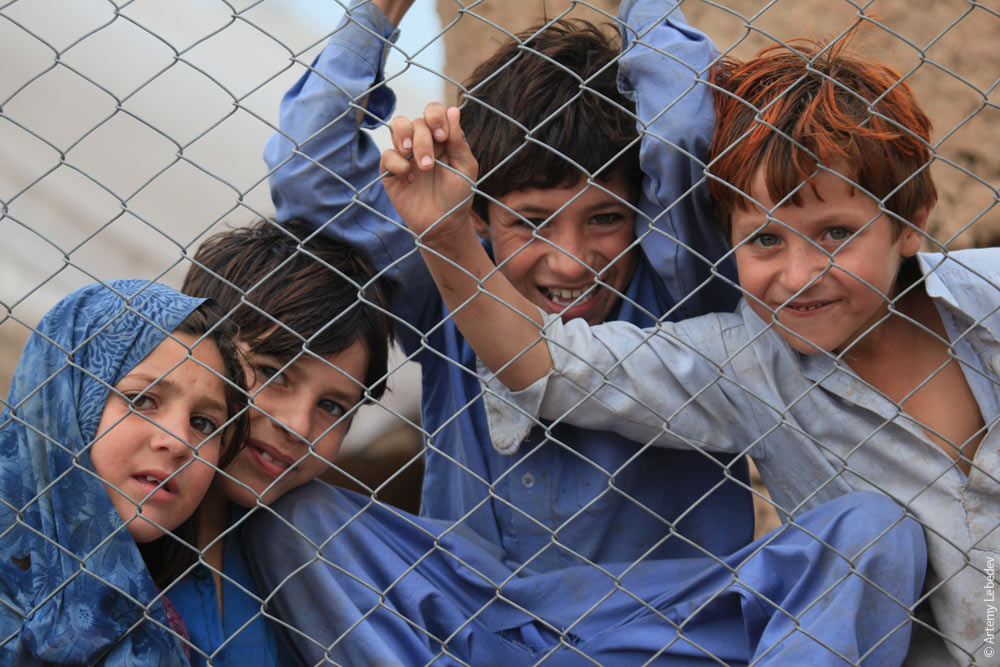 Girls. 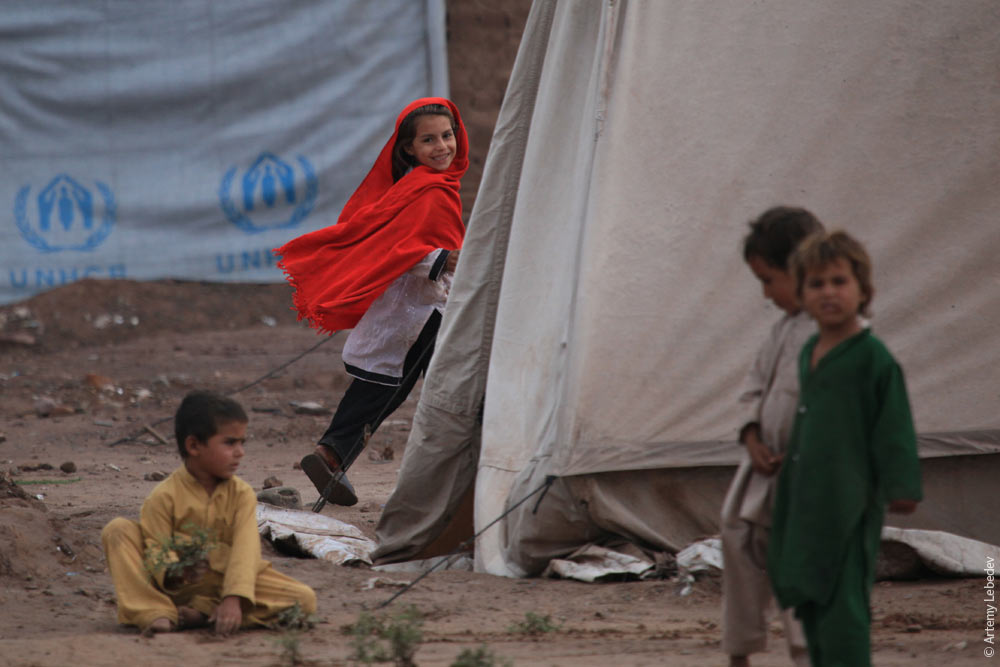 Women. 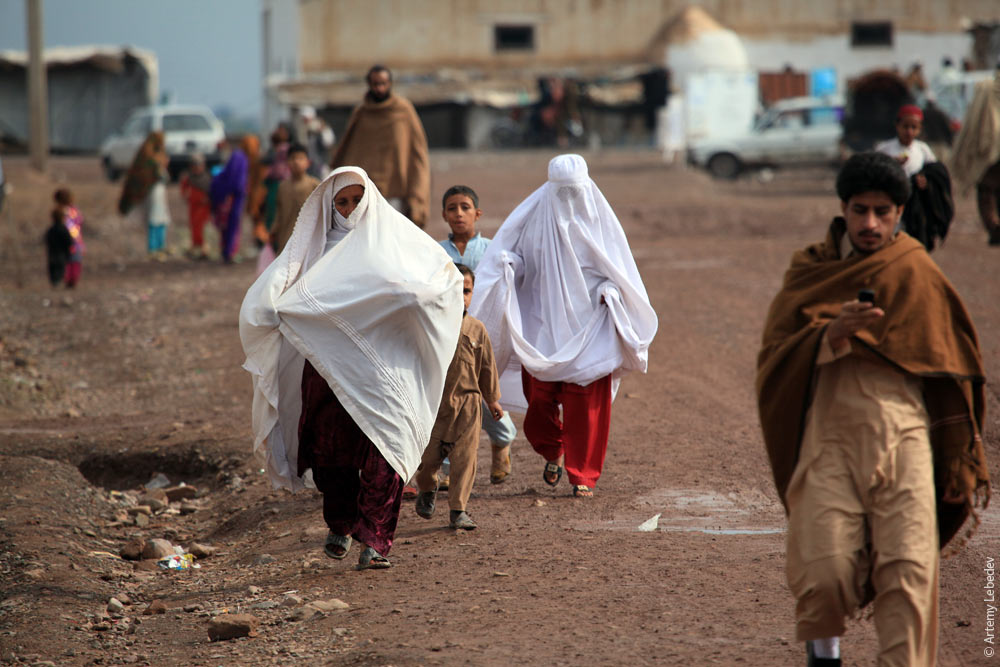 An old man on a traditional Pakistani bed.  A street manufacturer of some kind of light recreational drug. 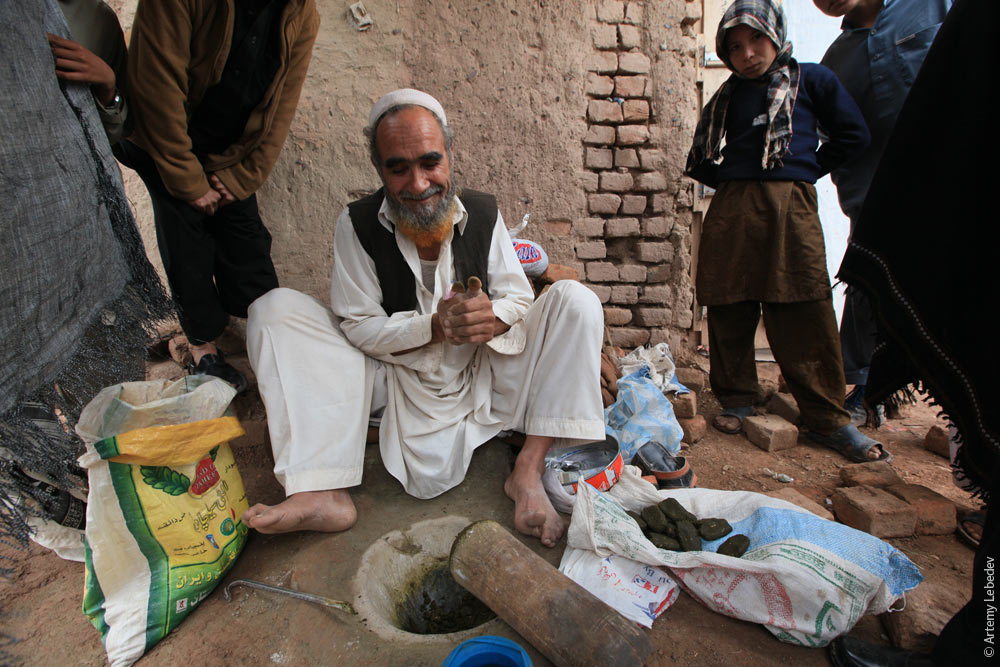 PeshawarMapLife in the suburbs is traditional. 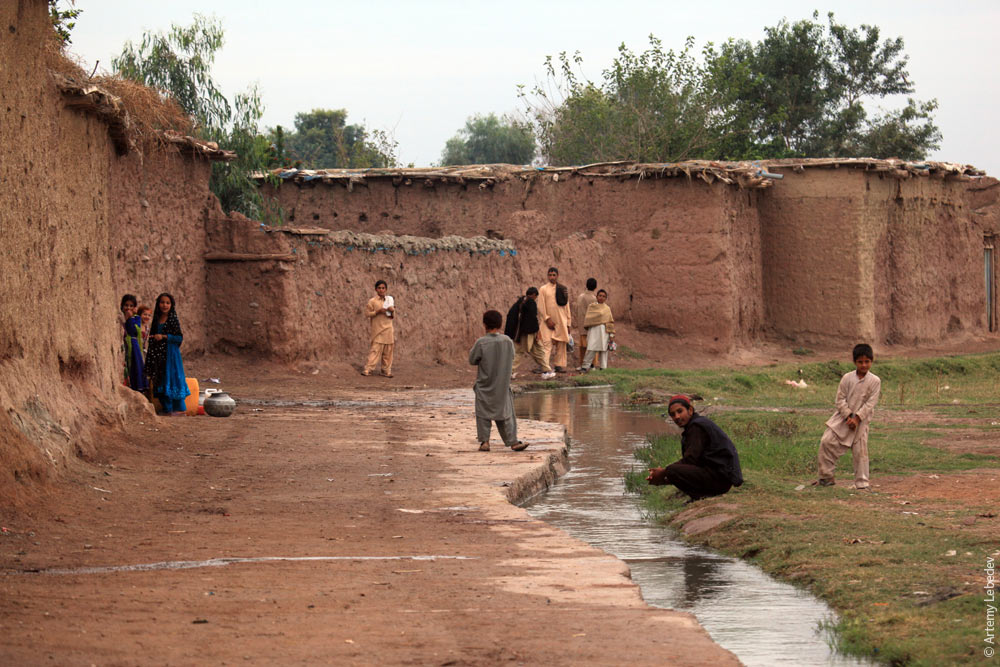 Sewage flows through the middle of the street. There’s a runoff gutter leading out from each house.  Only the highway is paved, having asphalt anywhere outside it is simply impossible. 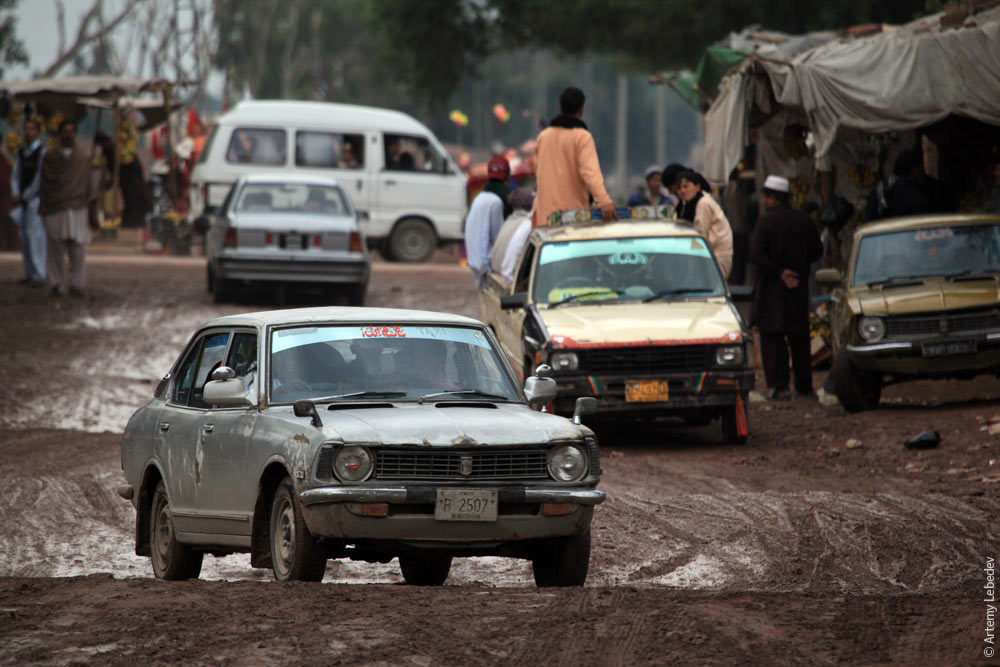 But once you get into the city itself, everything is splendid.  The roads, the homes—everything is just like in the rest of the country. 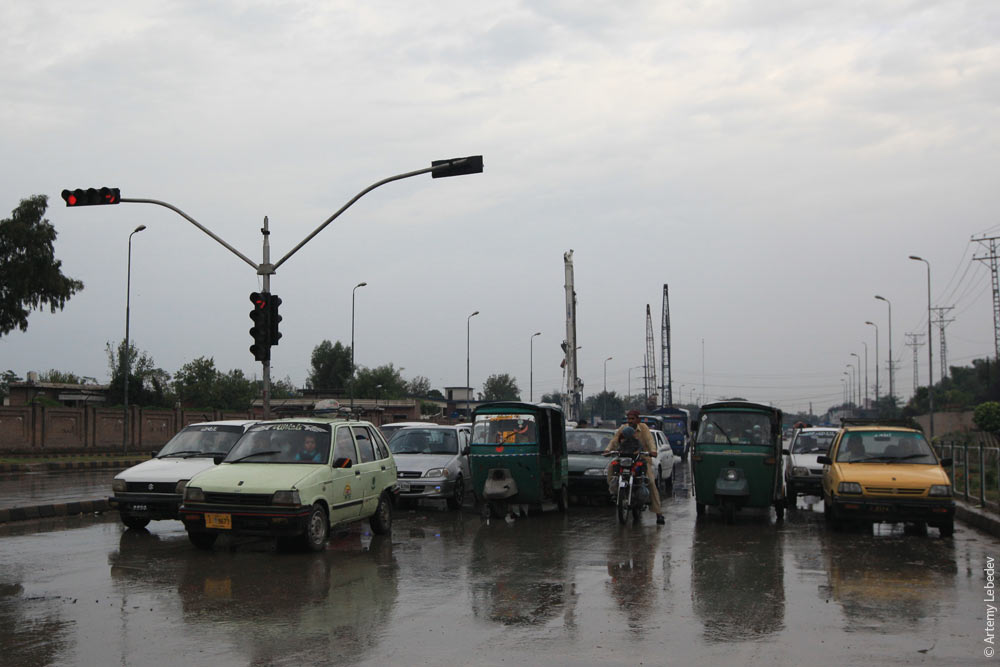 It used to be very beautiful here once. 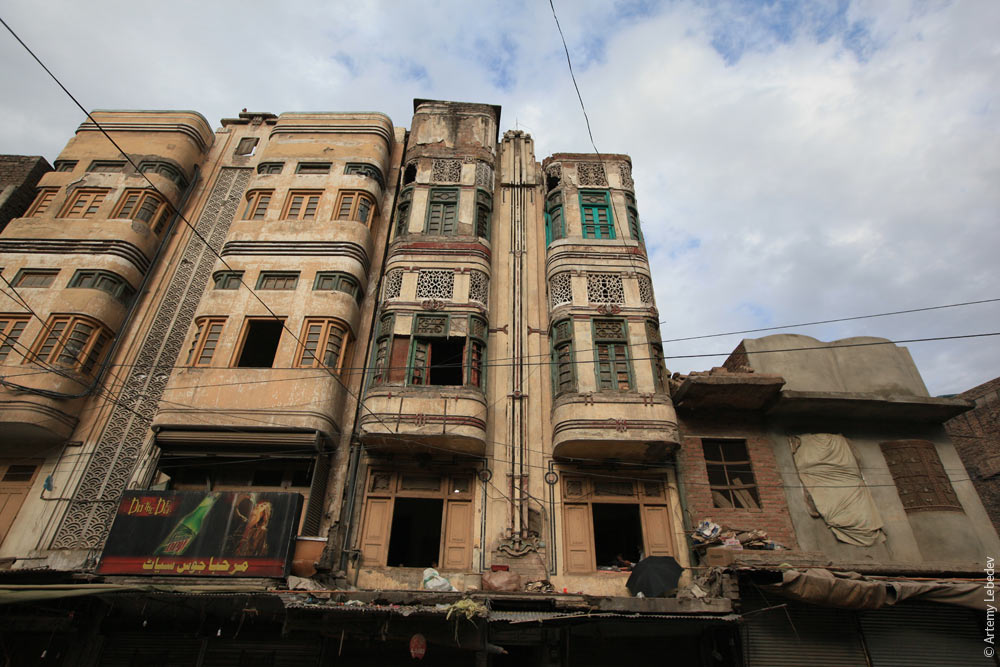 Today’s residents have no appreciation for architectural flourishes. The windows have been turned into embrasures. 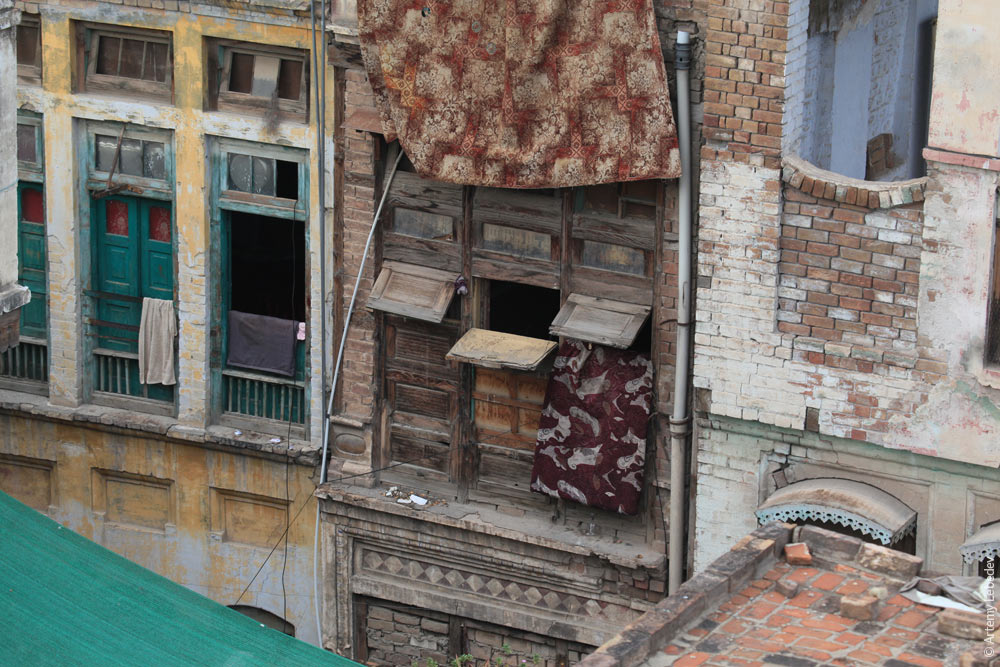 All the women wear strict headscarves that cover the face. 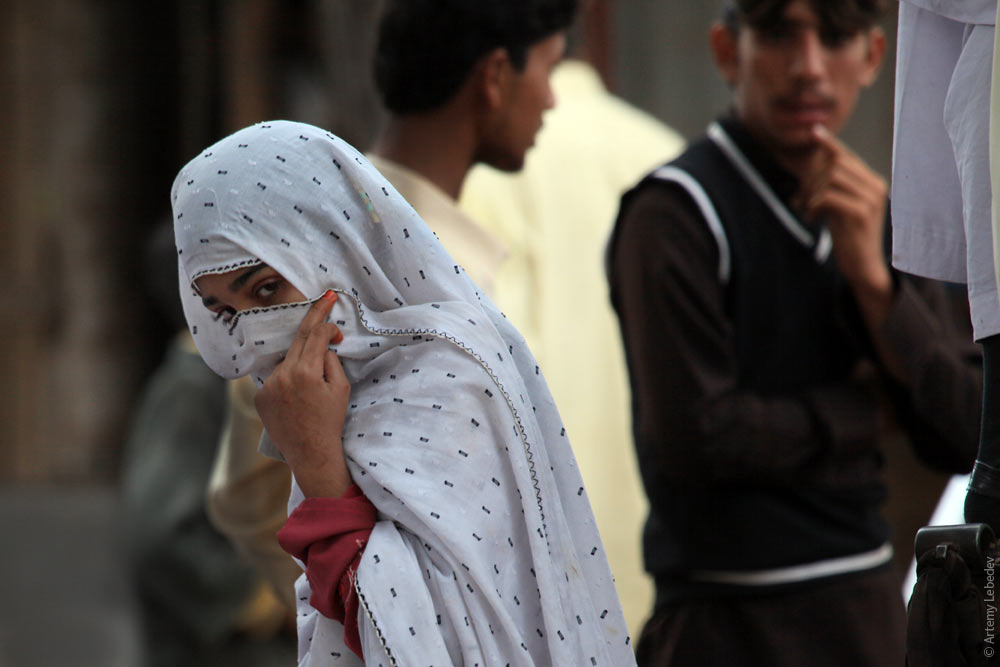 Girls in the old city. 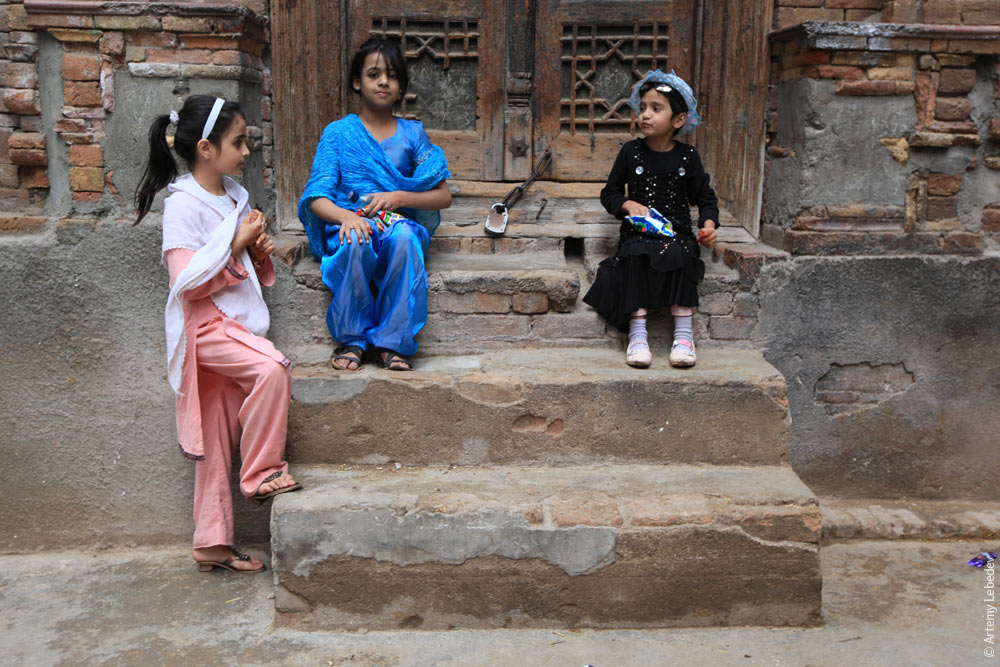 Boys picking out a movie.  In mixed company with a cow’s head. 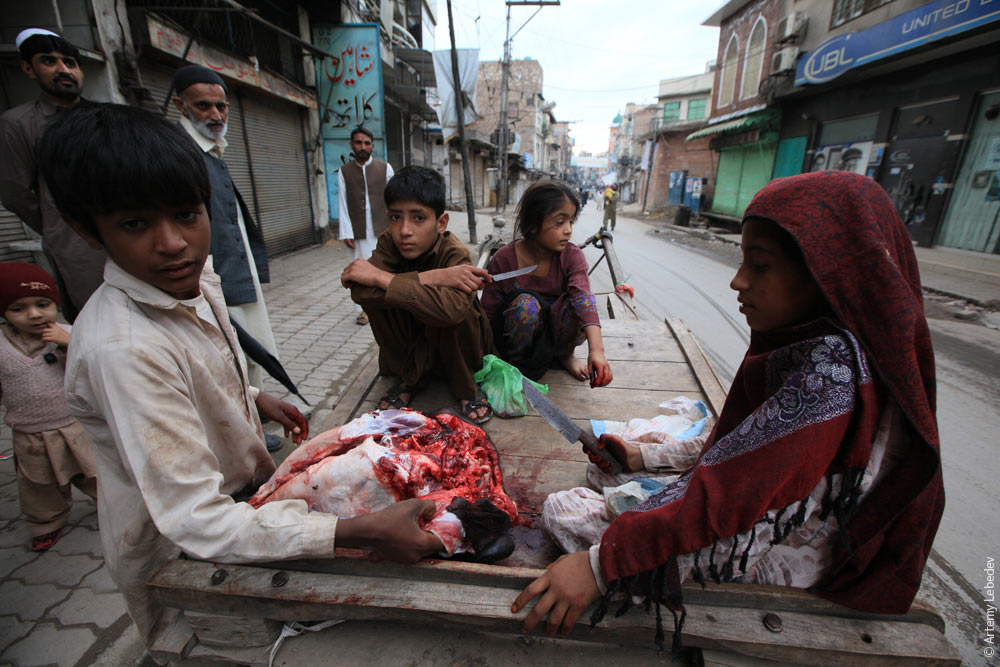 Hides left over from the recent holiday are sold on the streets.  Smiling faces everywhere. 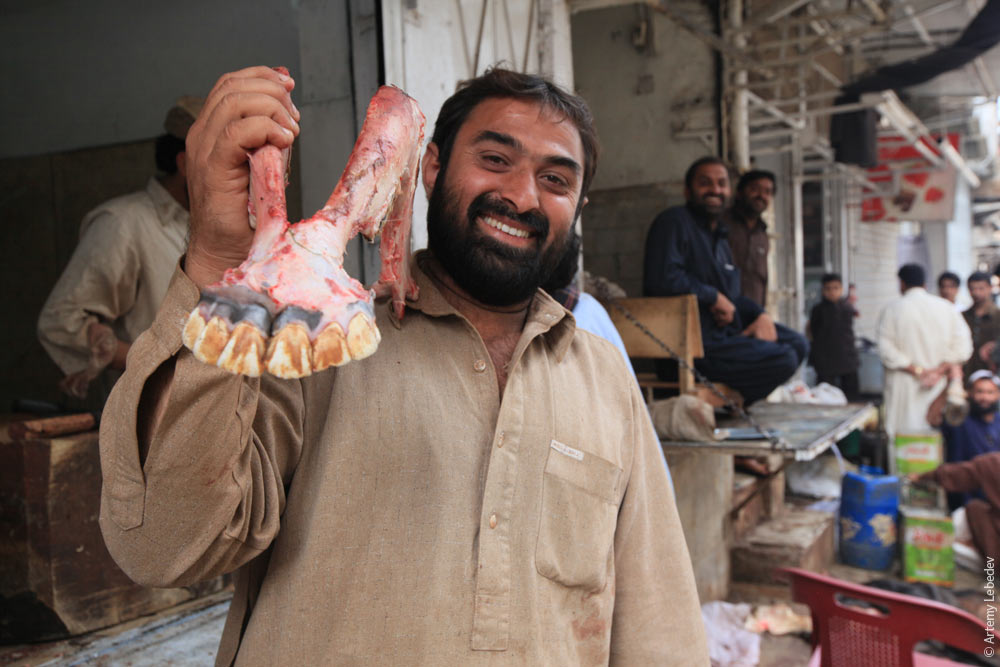 An old man wheels a mobile swing set down the street. 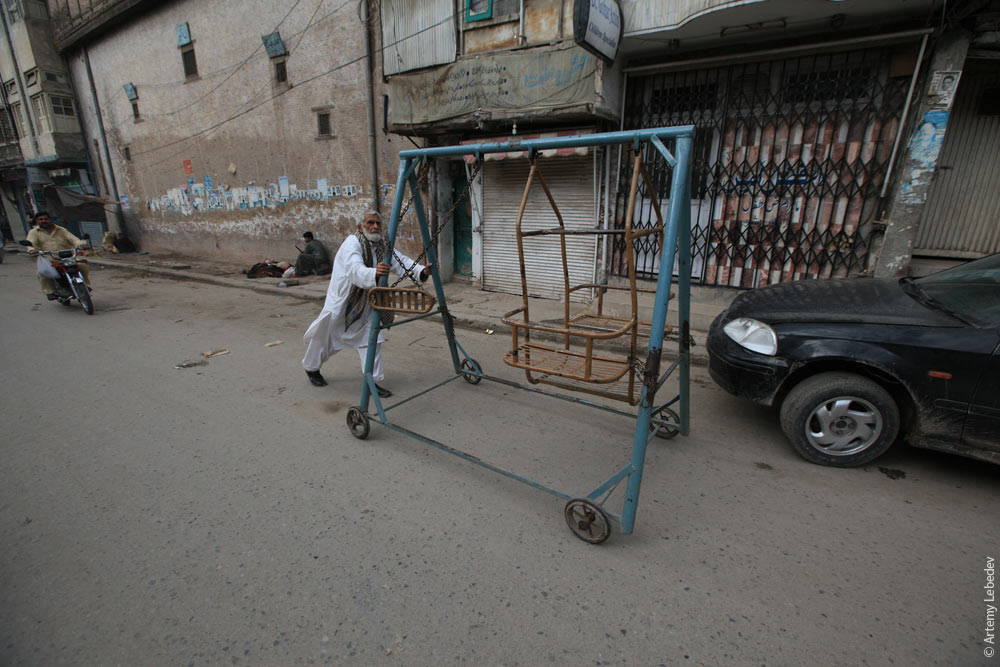 An elderly man dying. 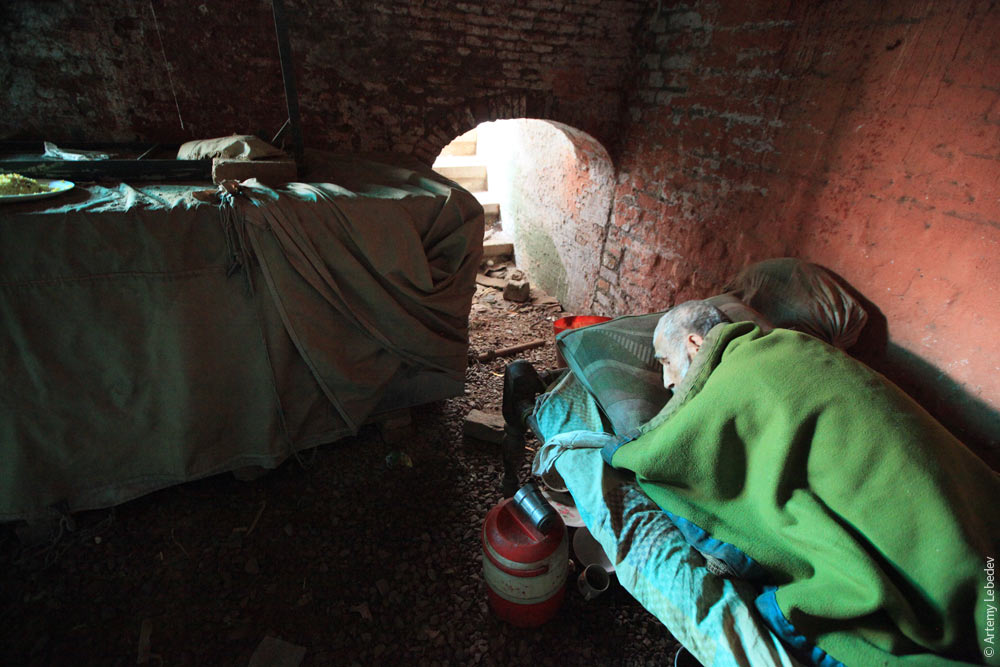 Giant power transformer radiators on utility poles are the streets’ chief decoration. 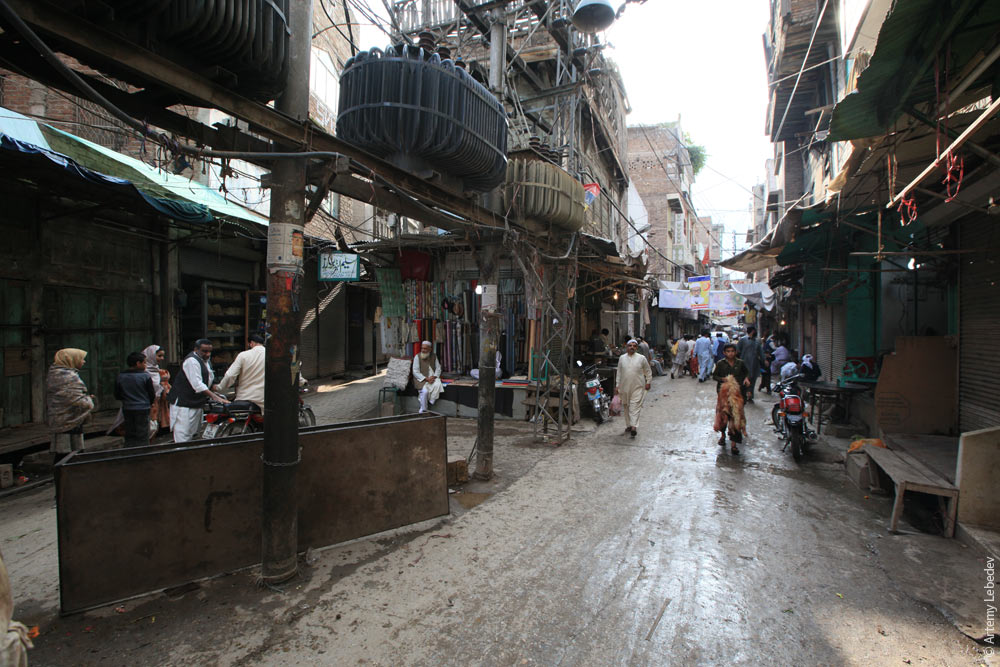 Enterprising individuals on street corners charge a modest sum to waft special smoke from pans with coals and incense into drivers’ cabins, to ward off evil spirits. 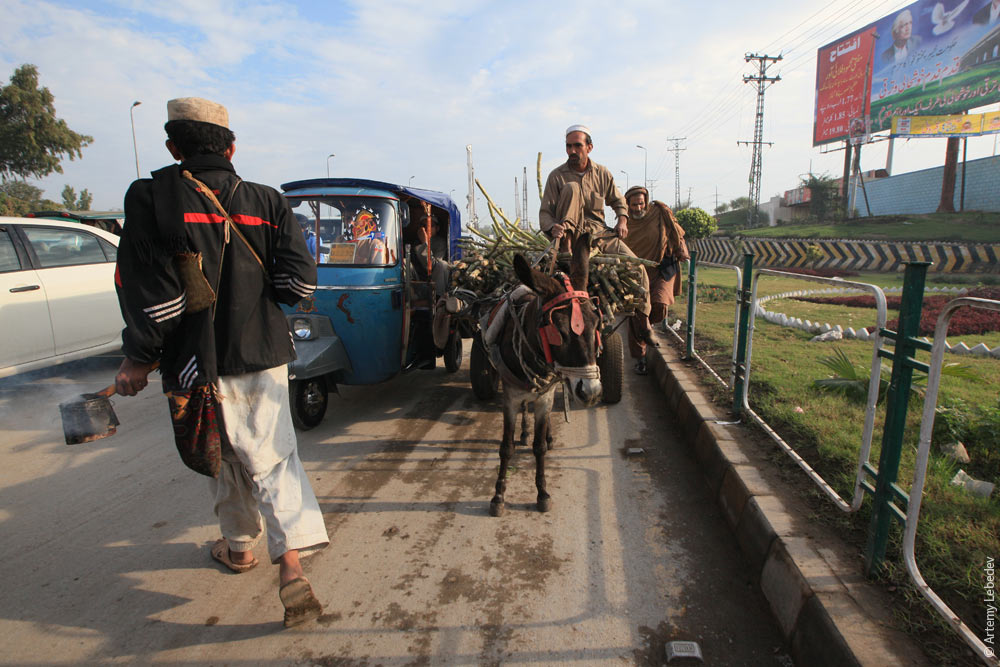 LahoreMapA kilometer marker post. 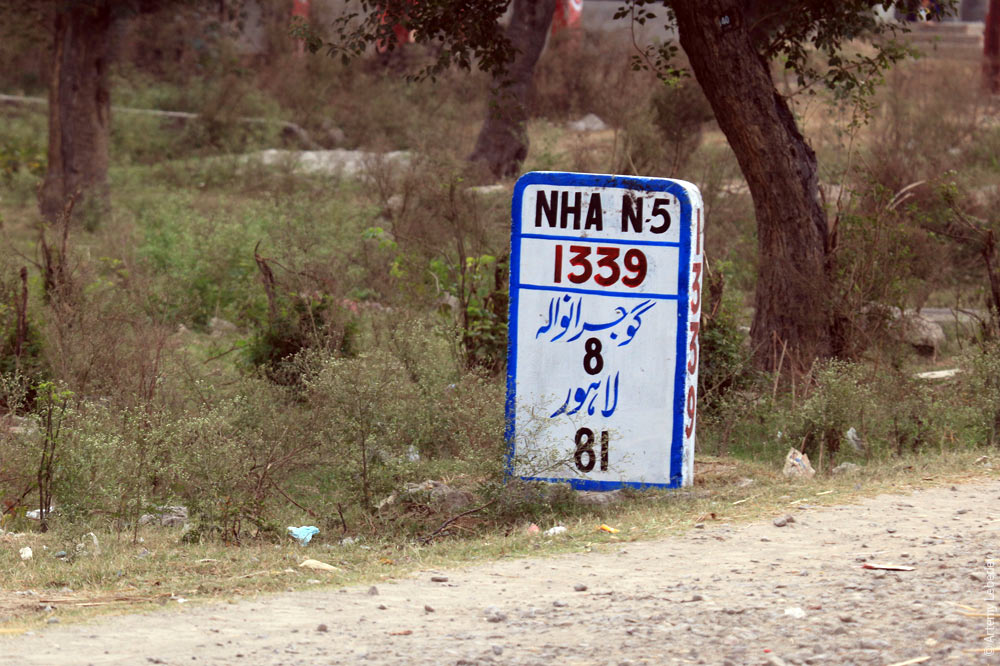 On the Ravi River, right outside the city, is an indigent camp. There are cows grazing here, tents, people cooking something. 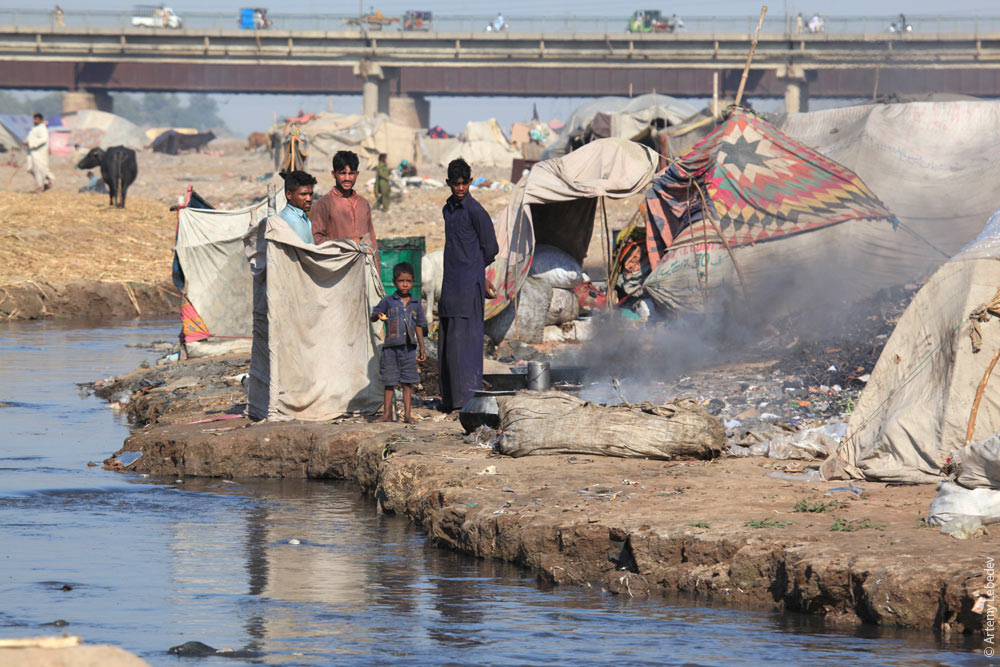 On closer inspection, it turns out that what’s cooking is week-old animal entrails. Tripe is taken out of bags and sorted. The smell alone could kill you. 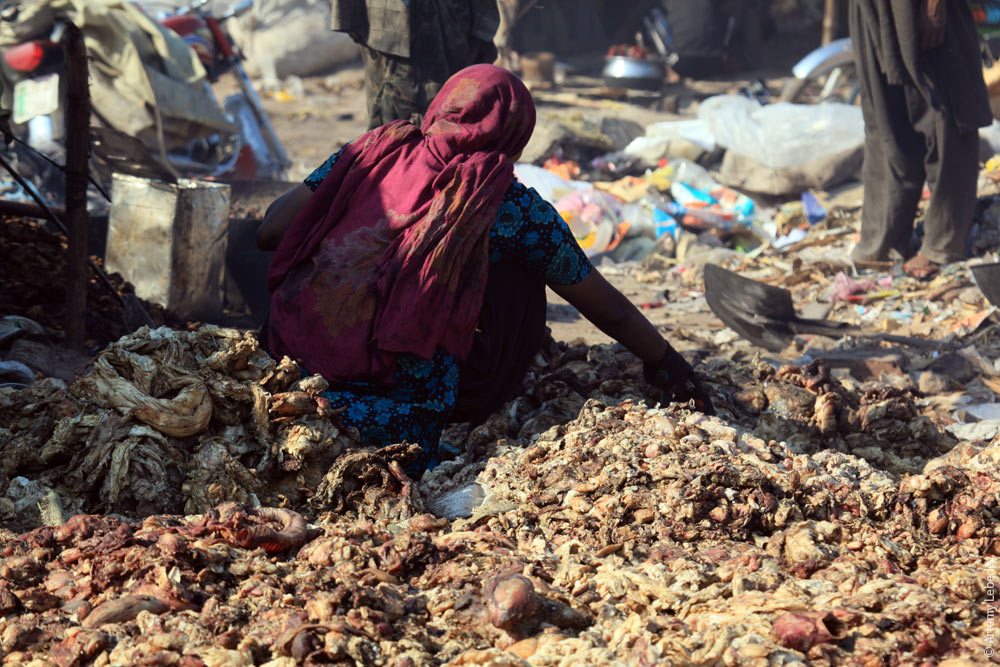 Fires are fueled with scraps of leftover industrial rubber of some kind. The black fumes are supplemented by the inescapable stench of cadavers. They’re making a concoction for some sort of folk shampoo recipe, I think. 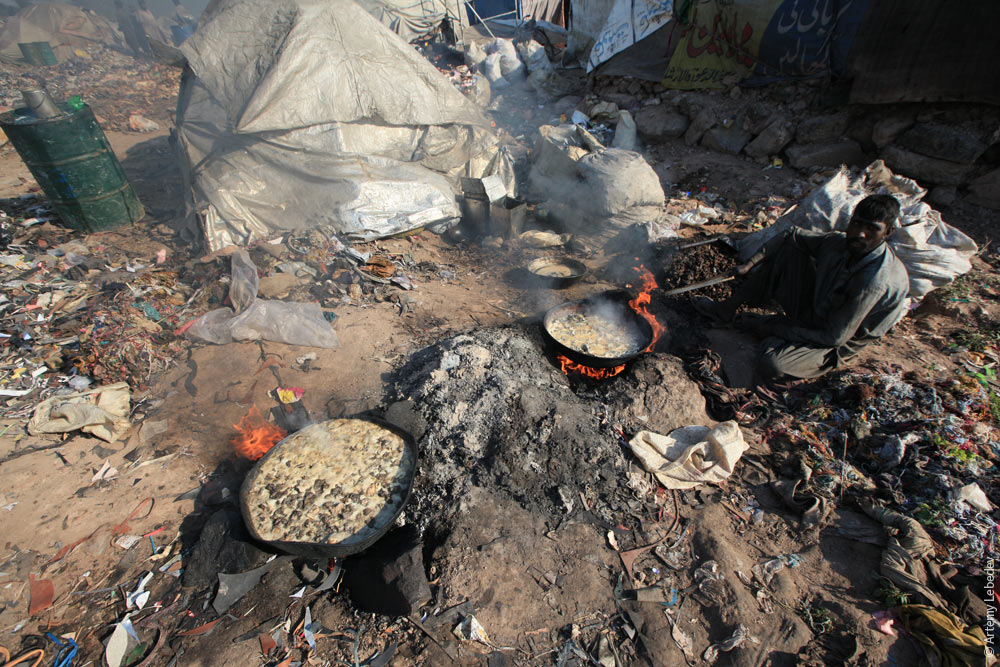 After all that, it’s difficult to imagine what the city could possibly surprise anyone with. But the city held its own and surprised me with its abundance of advertising. 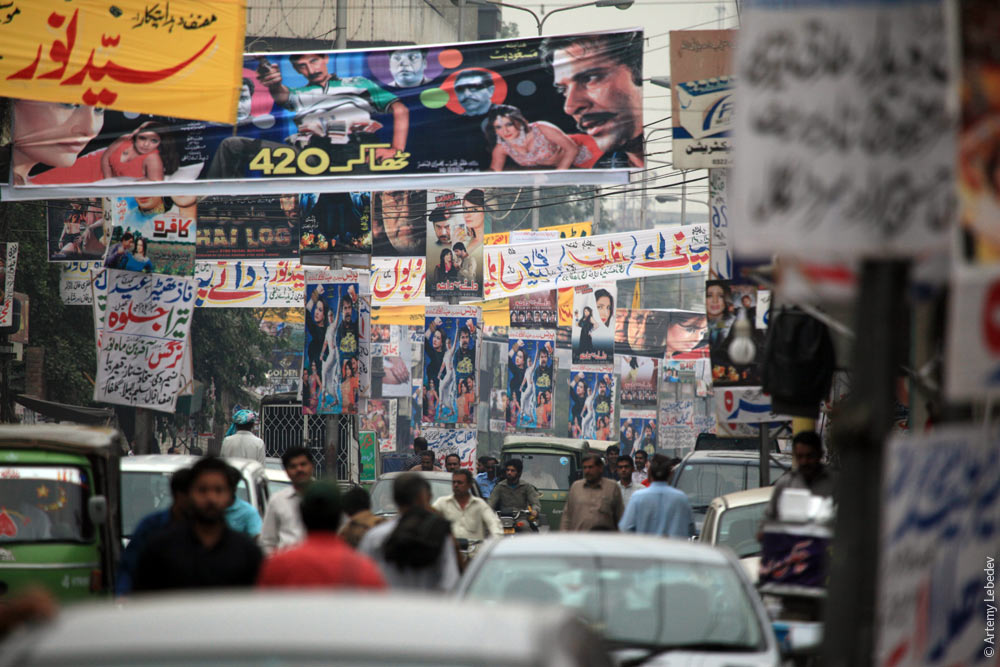 And wires.  And architectural innovations.  And a little bit by the fact that you can find Pepsi bottles with Fanta inside (Pepsi has completely squeezed out Coke in Pakistan, by the way).  A street. 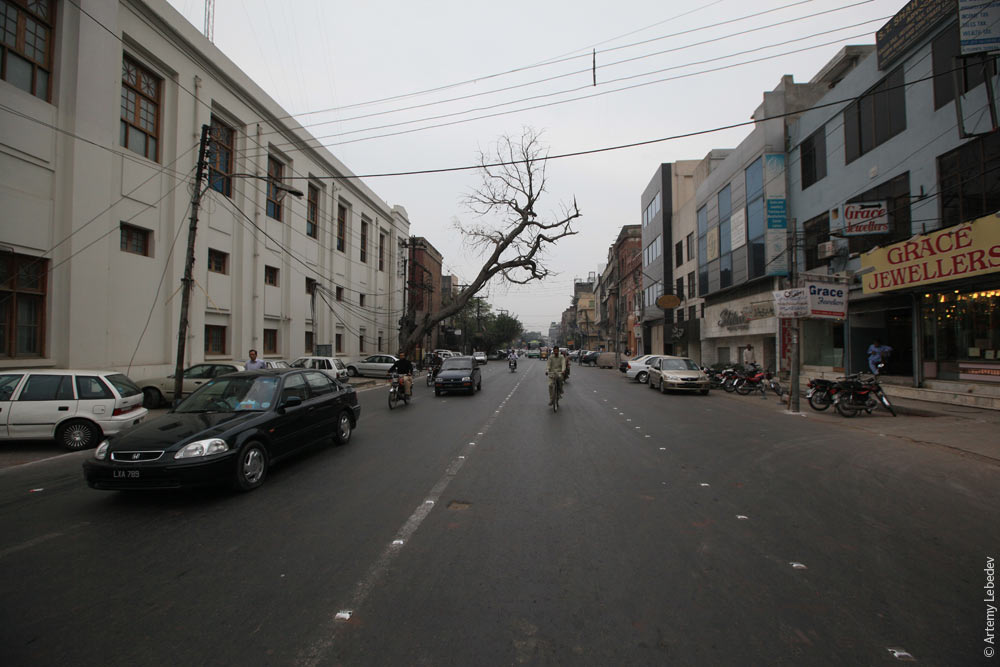 An unwanted telephone booth. 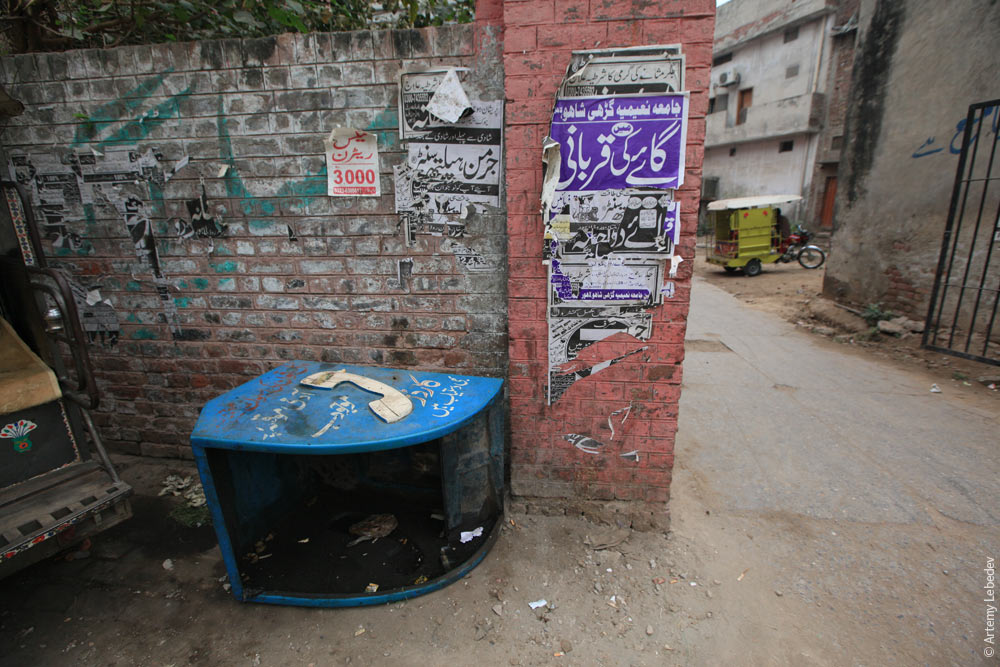 A pedestrian crossing sign. 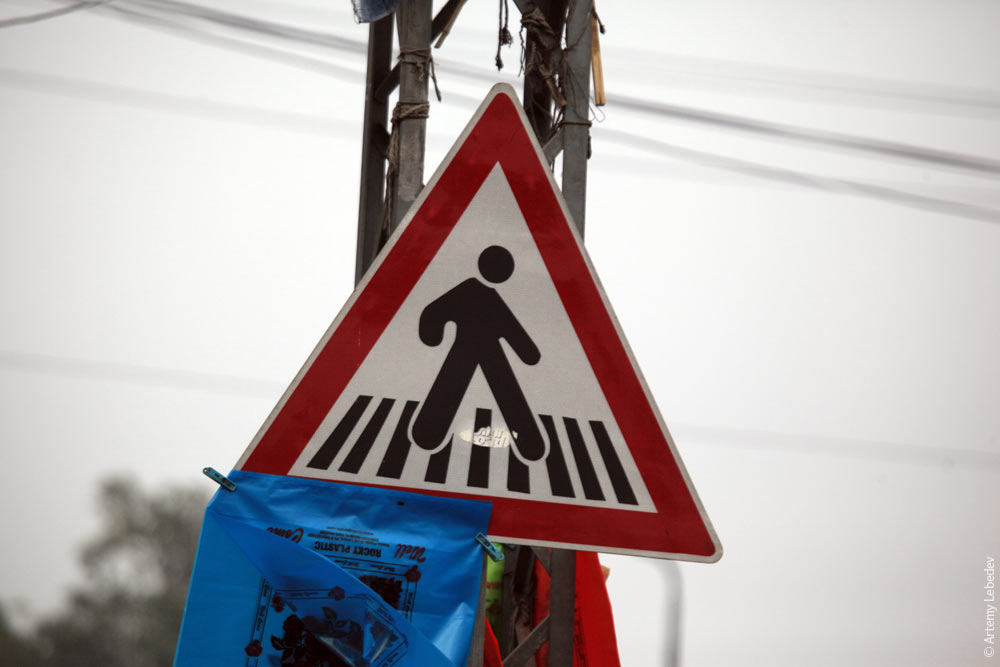 The traffic light poles are incredibly tall here. 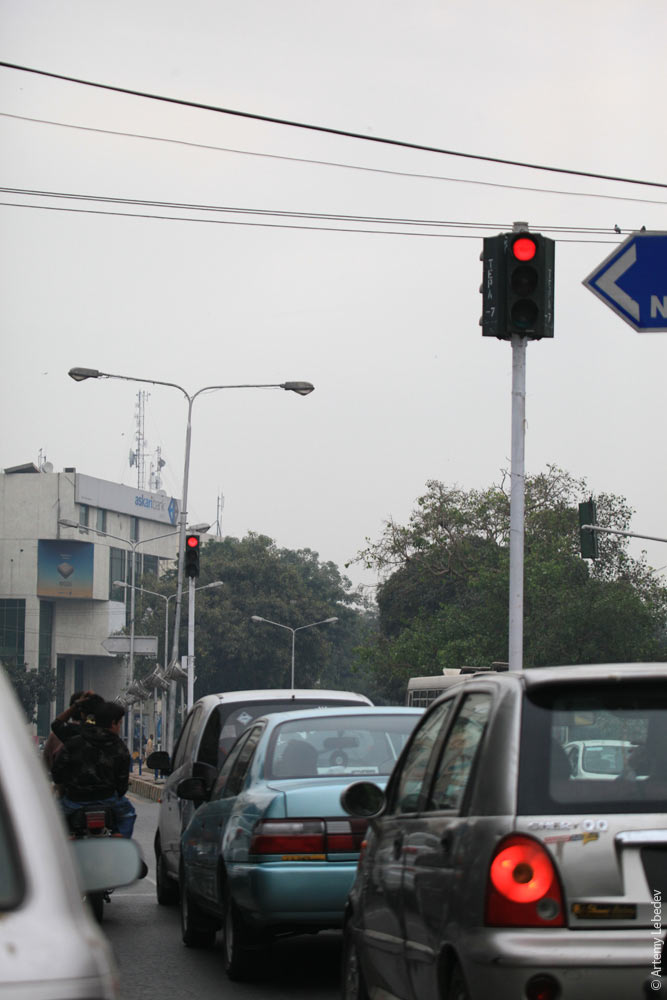 Auto rickshaws. 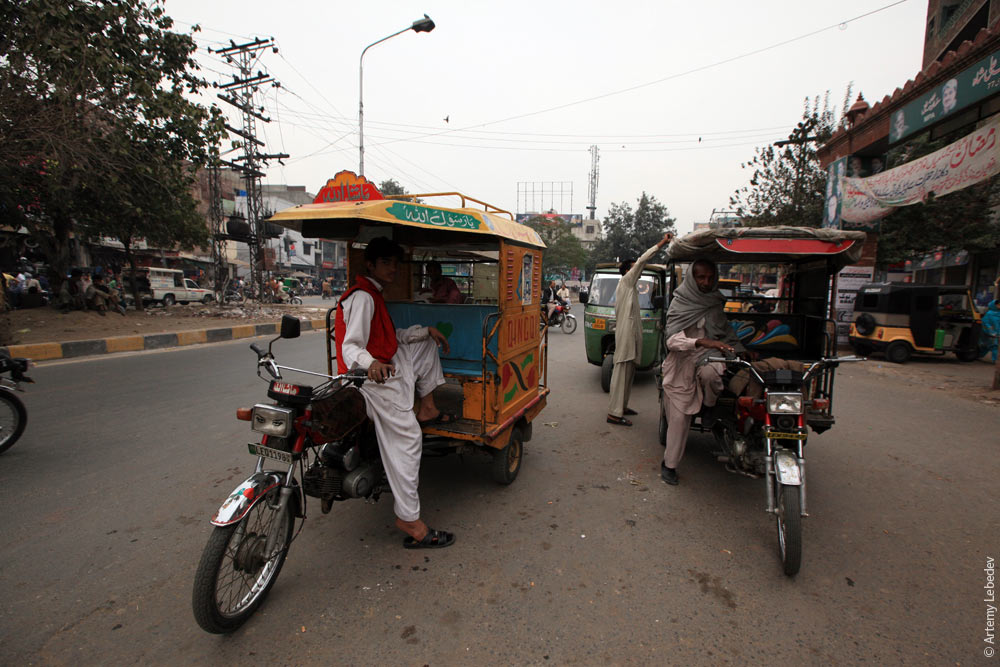 A post office employee with a bifurcated thumb on her left hand.  A street cook. 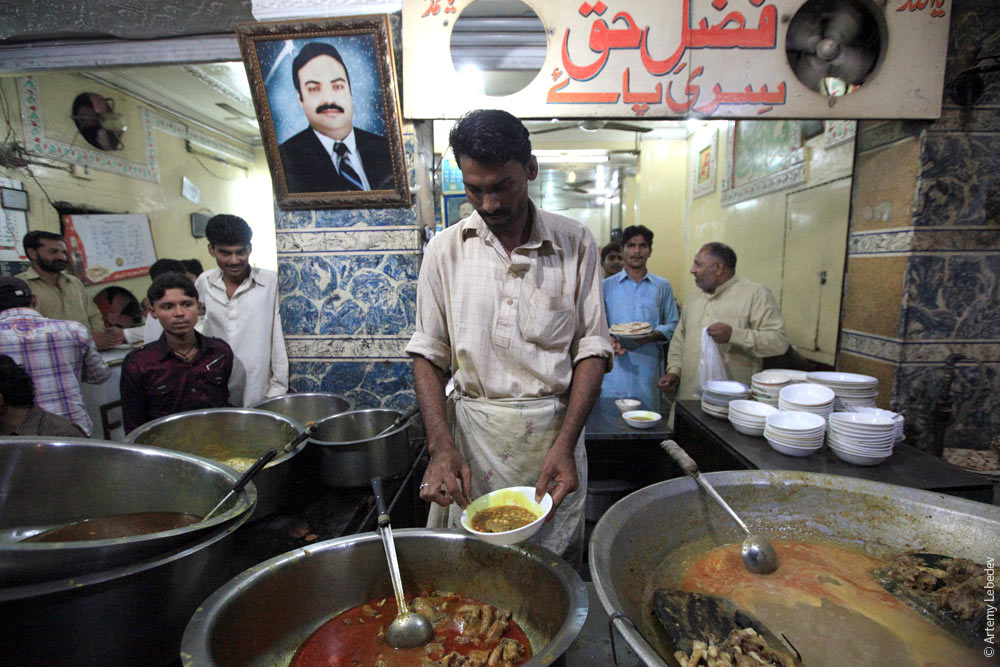 A public cinema.  A shoe-keeper at the entrance to a mosque. 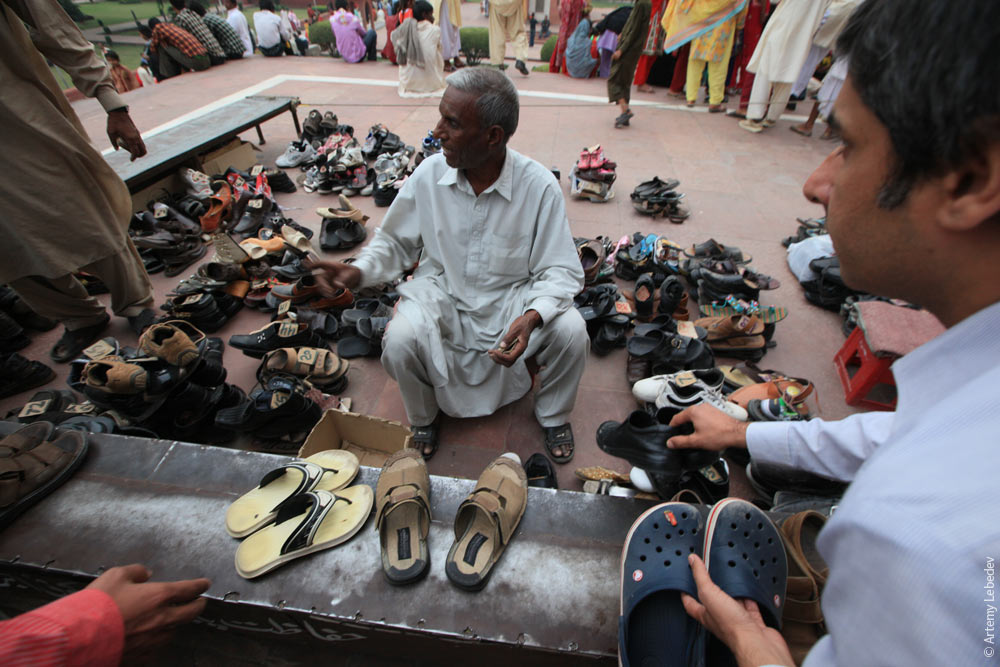 “Dad, look, a rhino!” 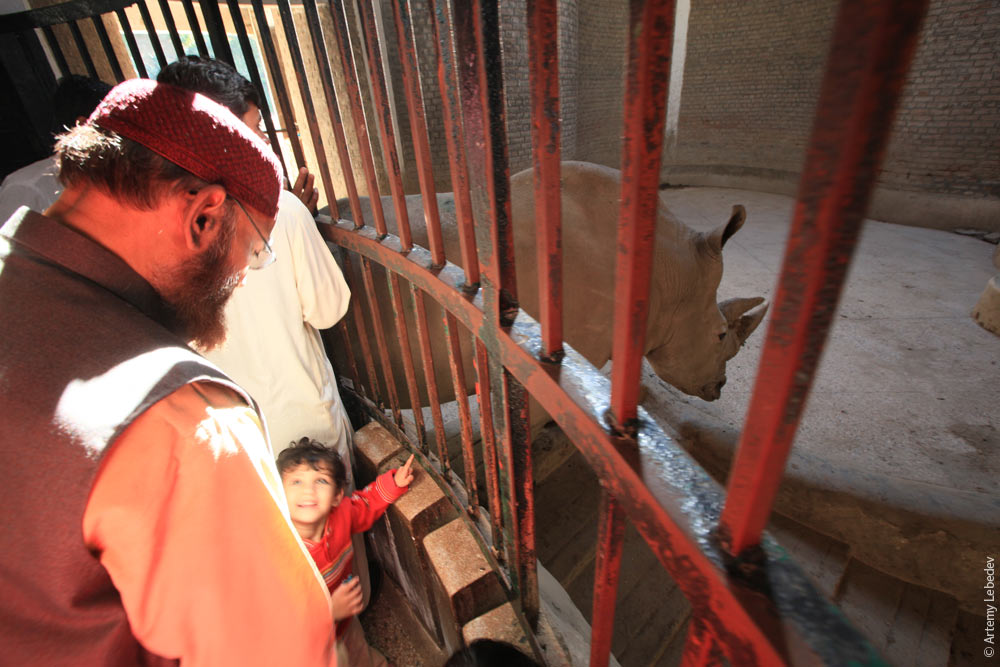 A homeless man. 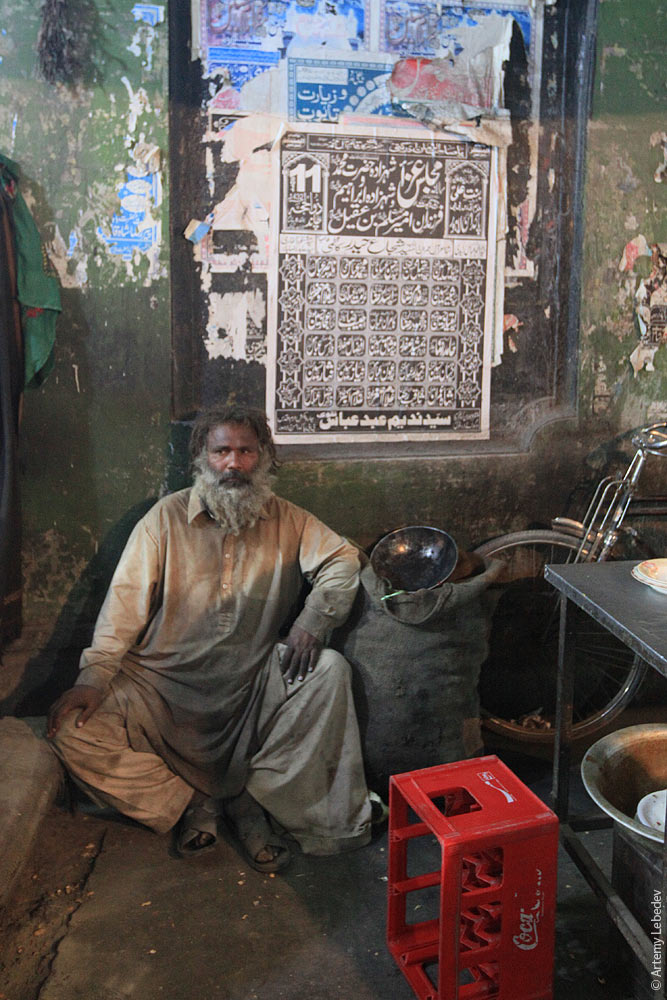 A cinema security guard tries to prevent me from photographing the movie posters.  A boy jumps on a trampoline in front of a mosque. 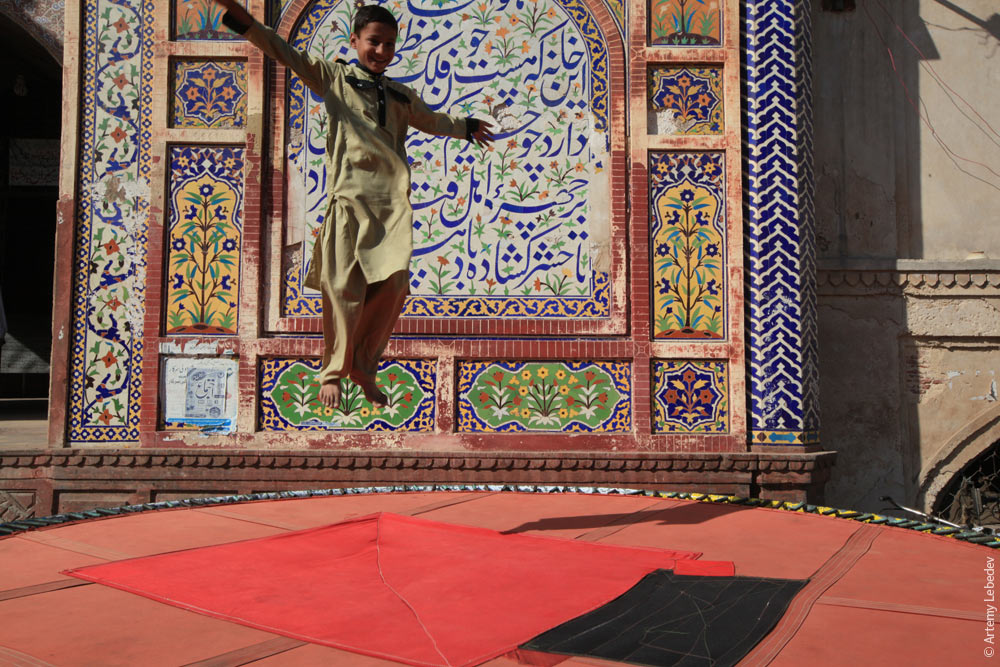 It seems incredible, but a mere ten years ago, young women sat on these balconies under red lights while men picked them out from below. Because the tradition had existed uninterrupted since ancient times, no one tried to stop them. Today, everyone orders women over the phone—progress has touched even this little-discussed sphere of Islamic life. 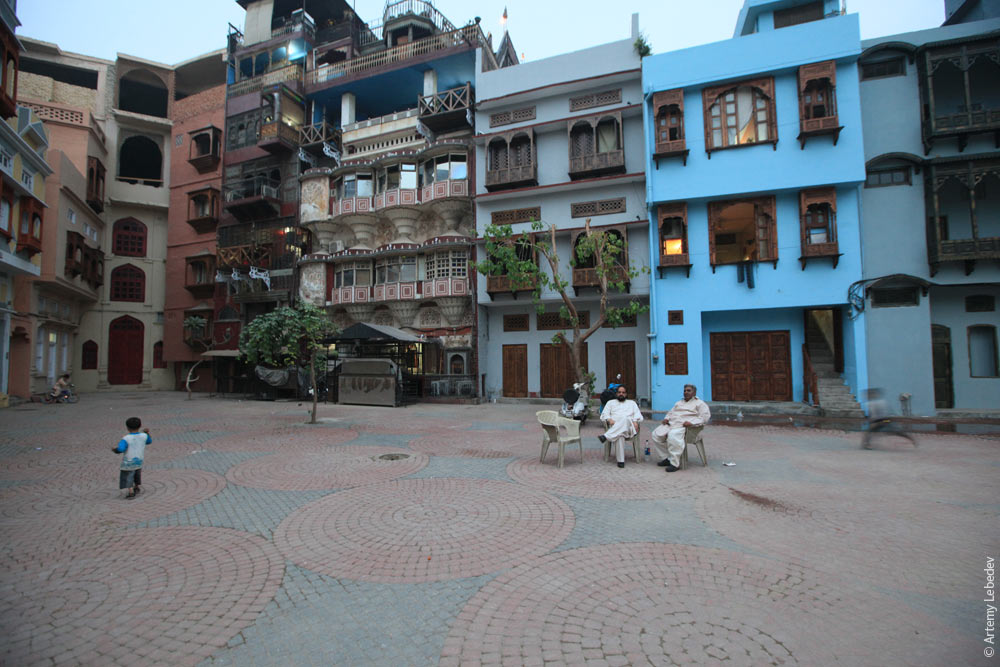 Shiite houses are marked with black flags and lights that glow in the night. By the way, Shiites have an excellent tradition called mutah, which means marriage for one night. Convenient. 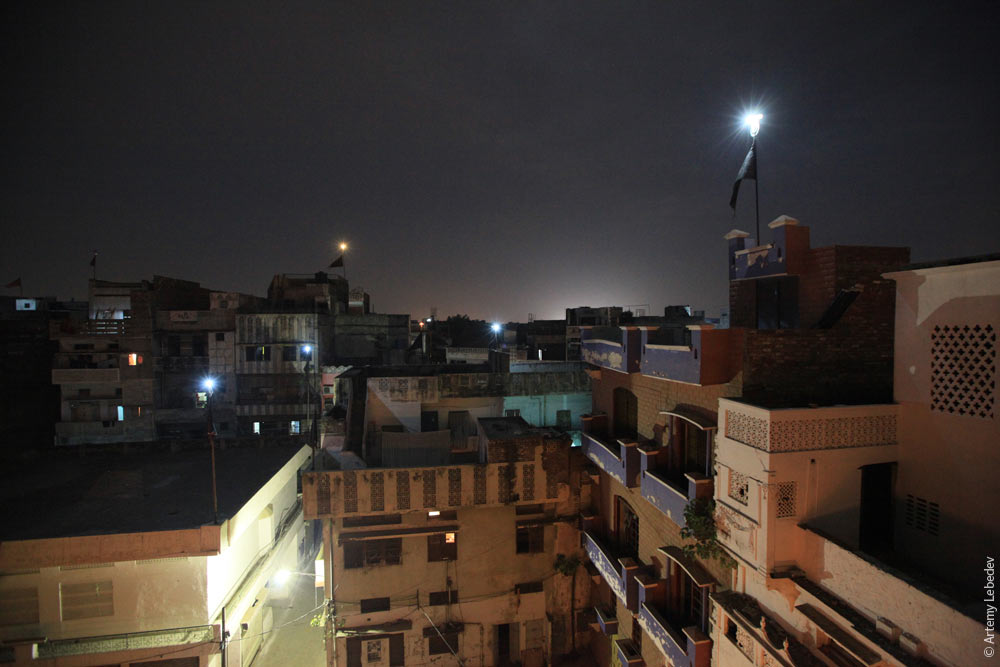 Not a bad city, in short. This is where the intellectuals live. A sort of Pakistani Saint Petersburg. 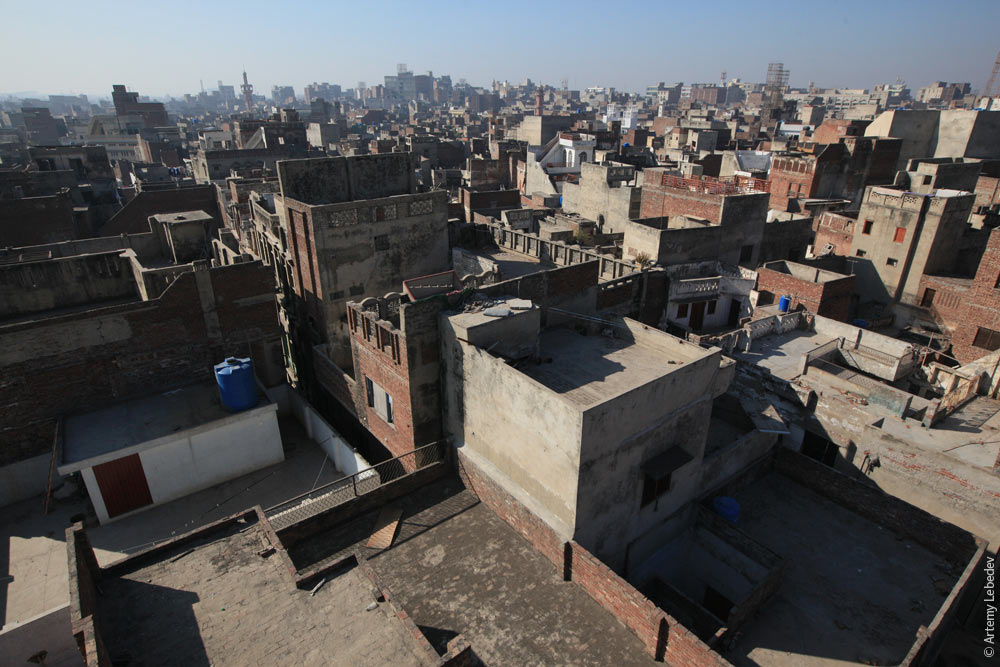 KarachiMapThe most economically developed, cosmopolitan, bustling city in Pakistan. Even though there’s no terrorism here, the hotels are still diligently guarded. 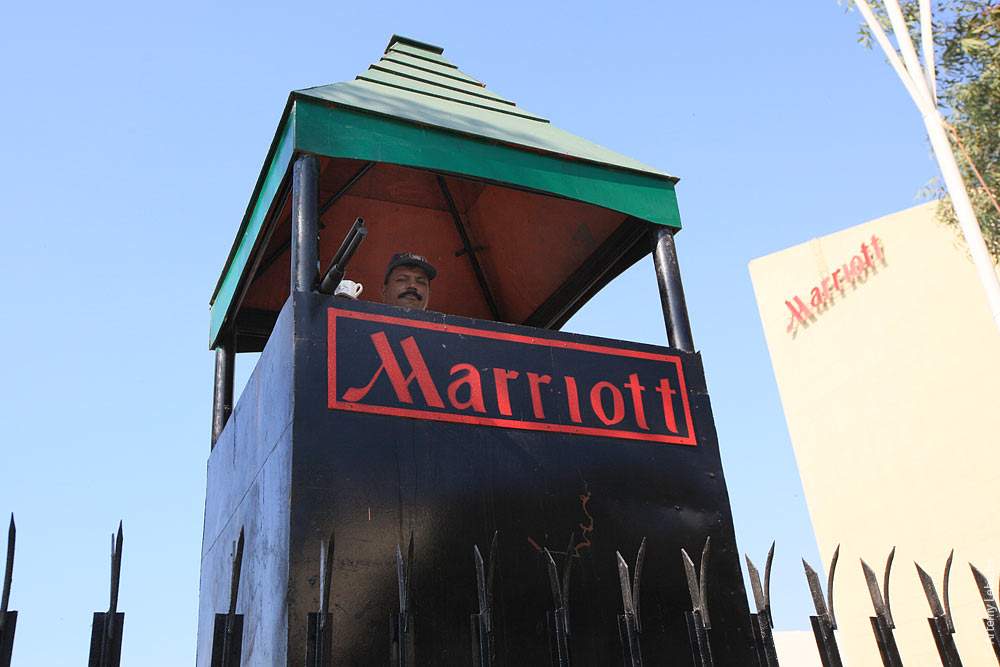 The street. 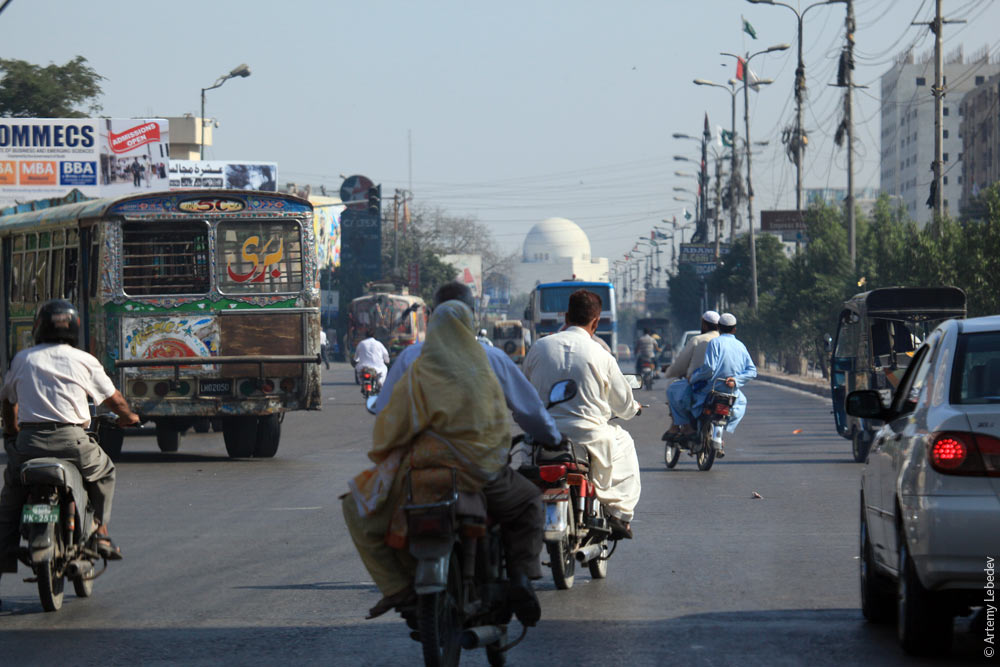 A bus.  Traffic lights. 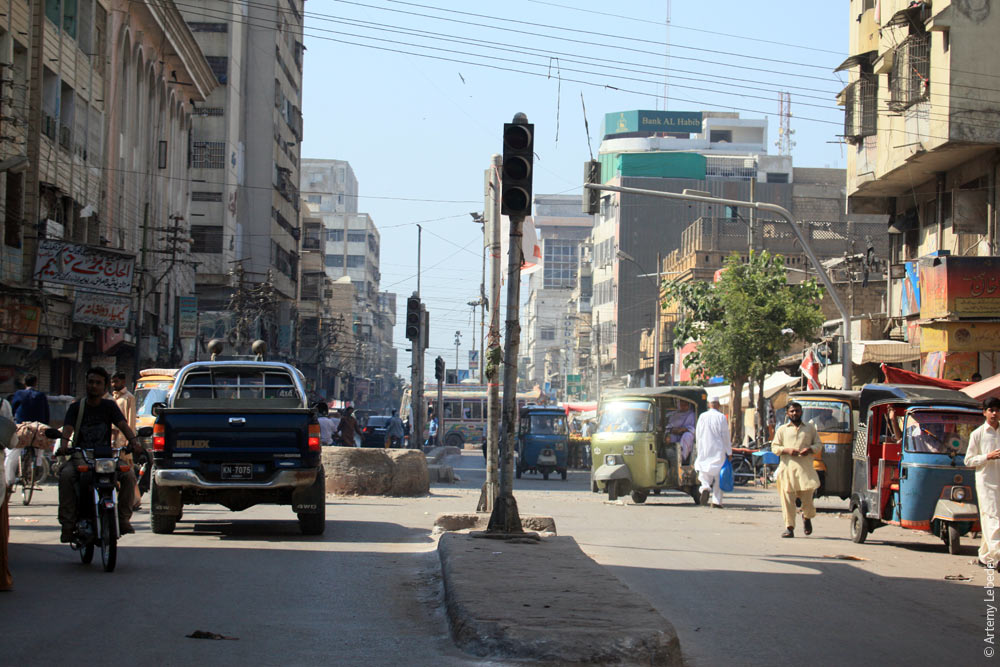 Wires.  Traffic signs. 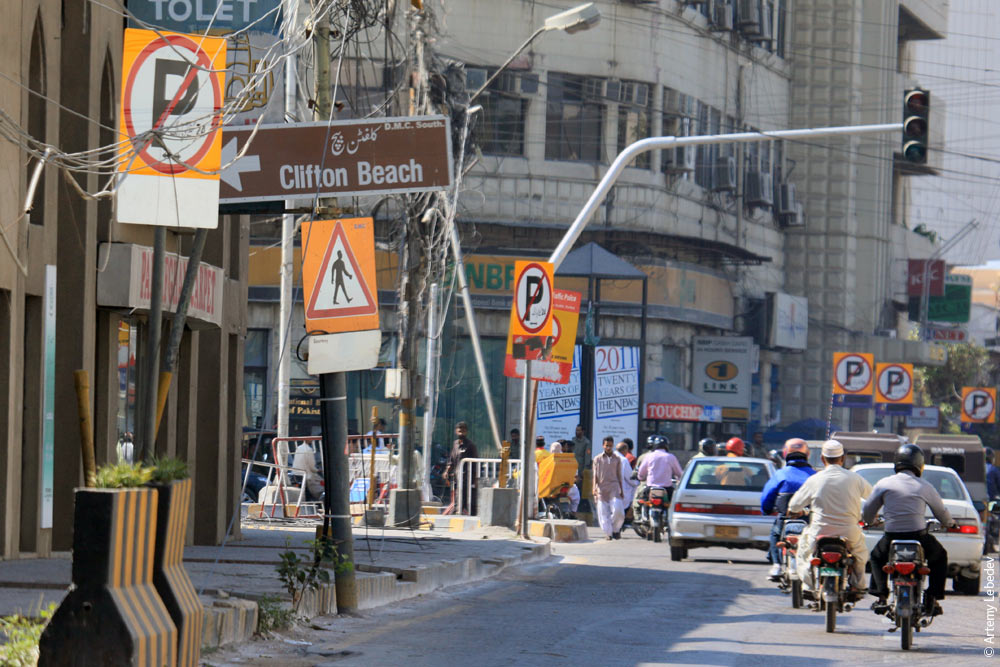 Two friends having a nice heart-to-heart by an open garbage dumpster.  Recreation on the beach 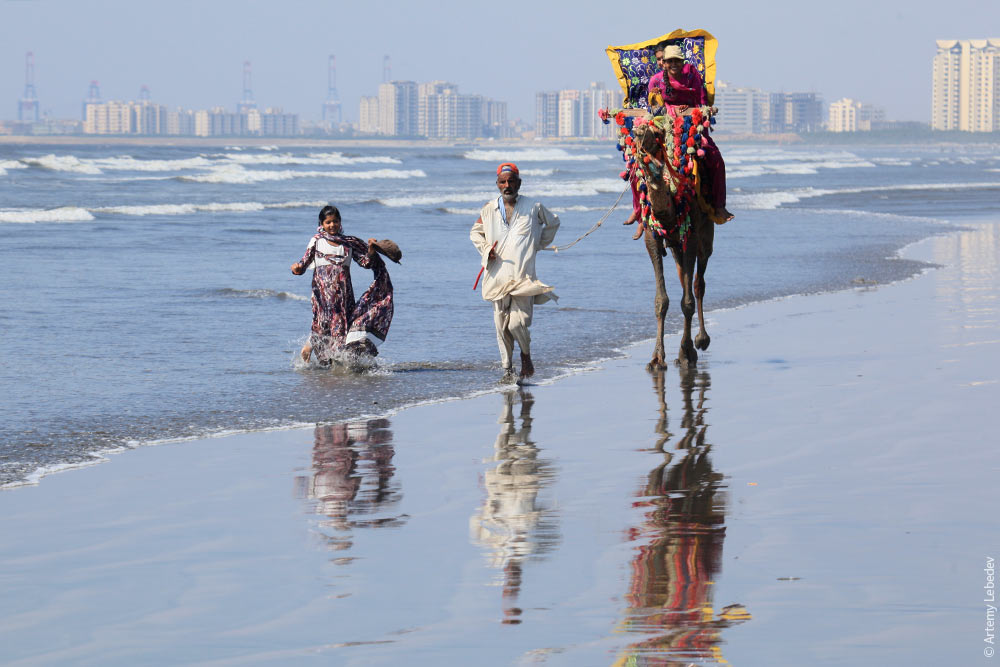 A transvestite panhandles in traffic. 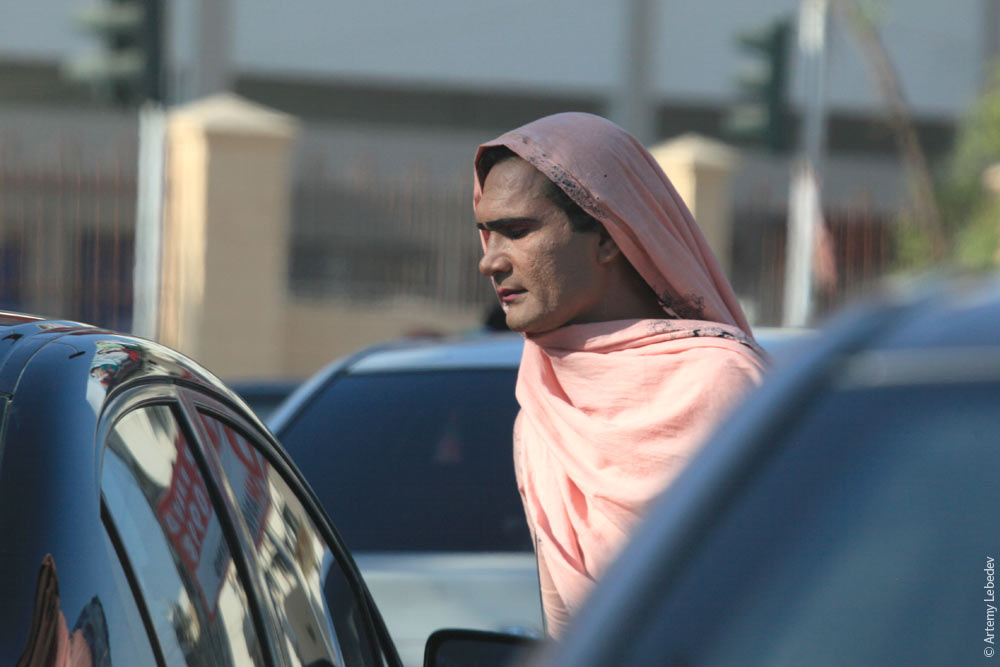 |